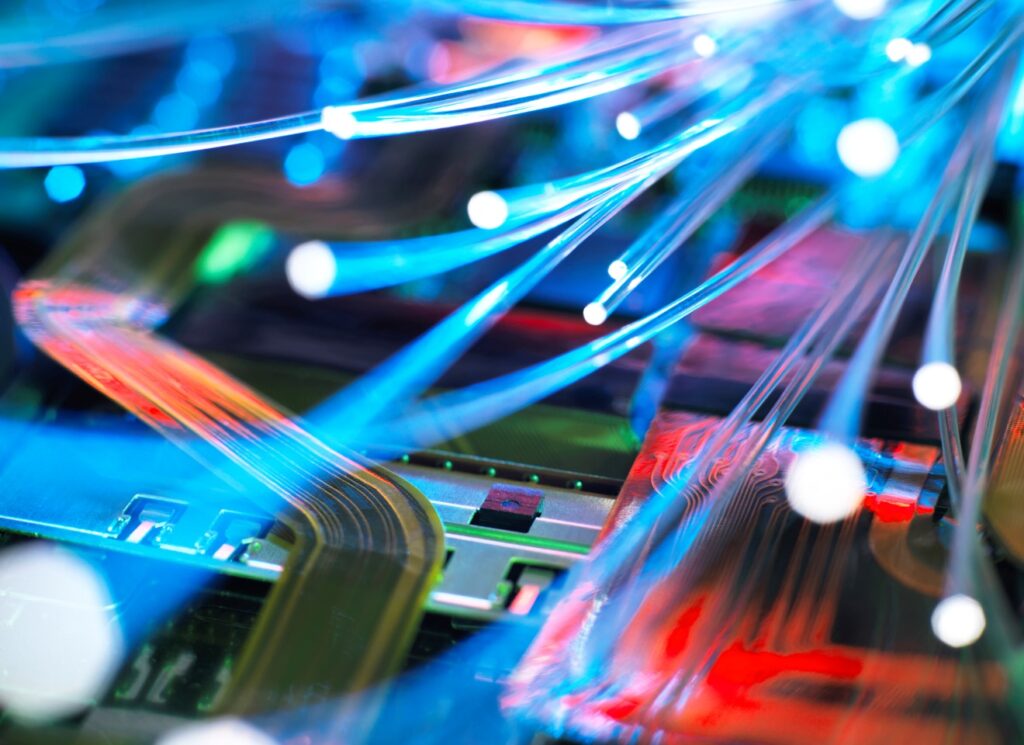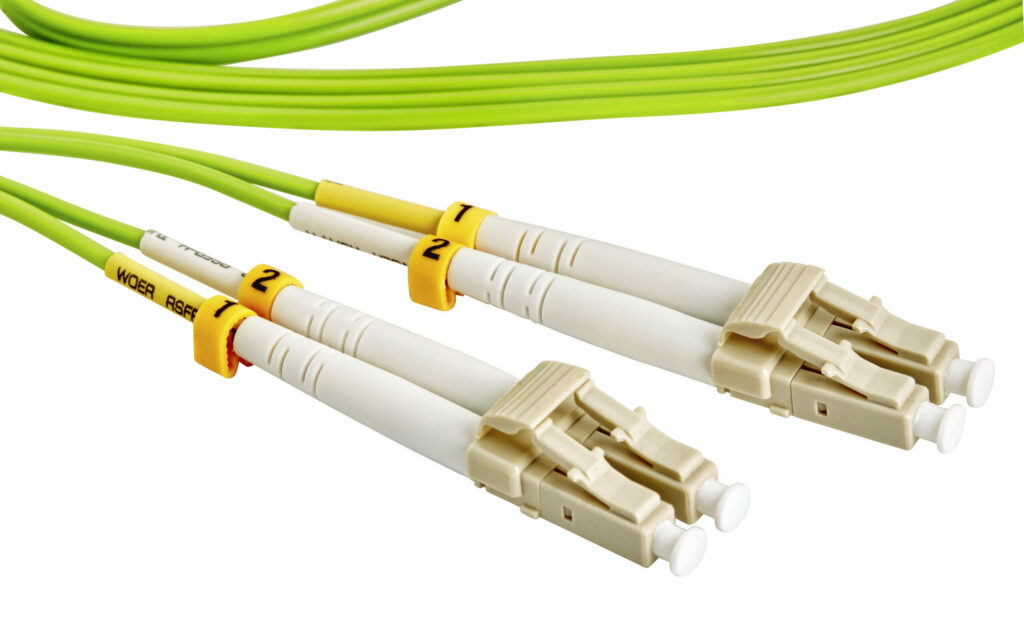For years now we have become use to Fibre Optics in our networks for both home broadband and work networks, so now is a great time to evaluate what systems are out there and where we should go from here.
So, what do you know?
Many of you will be used to Singlemode and Multimode Fibre types so we won’t spend any time on this subject except to say that all you really need to know is that Singlemode is good for very long distances. We are going to be covering Multimode being used in usual networks in office-based settings.
OM5 being the most recent commercially available iteration of Fibre Optic Networking meaning that before this there was OM1 though to OM4. Just like progression from Cat 5e to Cat 6 which most people will be familiar with, Fibre Optics are relatively simple to understand in terms of technological progression.
Let’s look at the speeds OM Fibres will run to:
| Fibre Type | Core Diameter | 1Gb Ethernet | 10Gb Ethernet | 40Gb Ethernet | 100Gb Ethernet |
| OM1 Multimode | 62.5/125 | 275 Meters | 33 Meters | Not Supported | Not Supported |
| OM2 Multimode | 50/125 | 82 Meters | 82 Meters | Not Supported | Not Supported |
| OM3 Multimode | 50/125 | 300 Meters | 300 Meters | 100 Meters | 100 Meters |
| OM4 Multimode | 50/125 | 400 Meters | 400 Meters | 150 Meters | 150 Meters |
| OM5 Multimode | 50/125 | 400 Meters | 400 Meters | 150 Meters | 150 Meters |
From the above table we can see there are clear differences from OM1 through to OM5 in terms of speed and lengths you can run to.
For the purpose of this discussion, we will largely ignore OM1 as it’s no longer used apart from legacy networks and is being commercially phased out partly due to lower speeds and the simple fact that is not compatible with future OM versions whereas all other OM versions being 50/125 will all work in a compatible environment albeit working to the lowest mode speed when in missed environments. Let us focus on OM2 and onwards.
The Need for Speed.
One question we must address is what speed do you really need? Well, the answer is depending on the type of system you have. For example, a typical office network will be connecting users to the main server and usually working off software and data services typically using similar data to spread sheets. After all it’s not like each user will constantly be running online videos and livestreaming.
If we take the lowest typical network environment most users will need 500Kbps – 2.0Mbps (megabits per second) speed of OM2 running at 10Gb which would be enough for 10,000Mbps so you can see the sheer amount of data this is.
Another way to look at this is if each user on the network was streaming video at a typical rate of 5Mbps it still nowhere near the capacity of OM2.
So why even go to OM5?
As you can imagine it’s not just about what we need right now it’s about what you may need in the future. Fibre has always been a big investment so it’s not something you want to have to replace anytime soon. Another important factor is often fibre is the backbone of networks carrying the mass of the network traffic and needs to be super reliable.

Finally, the main reason for OM5 is, progress… why not. For example, if we used the analogy of not needing to improve what we have cars would never have been designed to go any faster than 70Mph. Thinking about networks like this helps to understand the need for progression.
What place does Fibre Optics have in electronics?
Up to now we have mostly been focusing on the idea that fibre is for computer networks however, when we look at how fast the cost of fibre has come down over recent year we can see that using fibre in electrics can be a reality.
We know that fibre is ultra-reliable and can handle massive amounts of data. If you are designing a product that has these qualities, then fibre may be something you want to consider by replacing copper ethernet inputs with fibre.

When we consider the first concept for fibre was the use of audio devices such as radios and other such devices it’s easy to see how we can get back to the principles that fibre was based on.
Here are just a few benefits of fibre over copper:
- Very low power consumption
- No EMC Noise Suppression required
- Not susceptible to corrosion
- Light weight and slim
- Most Fibre comes in LSZH as standard
- Long distance is no problem
While for many prices will still be a barrier to entry as we must acknowledge the cost of the electronics that convert data into light and back again is the highest part of the costs involved, we must remember that prices are coming down year on year.
With this in mind if you are designing for the future, you can consider fibre as an investment for the future and just perhaps show that your devices are truly future proof. How exciting is the idea that fibre optics could in time become a standard for all electronics?

